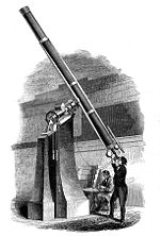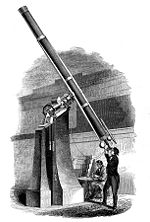
Henry Fitz
Encyclopedia
Early life
Fitz was born in 1808 in Newburyport, MassachusettsNewburyport, Massachusetts
Newburyport is a small coastal city in Essex County, Massachusetts, United States, 35 miles northeast of Boston. The population was 21,189 at the 2000 census. A historic seaport with a vibrant tourism industry, Newburyport includes part of Plum Island...
. The family moved to Albany, New York
Albany, New York
Albany is the capital city of the U.S. state of New York, the seat of Albany County, and the central city of New York's Capital District. Roughly north of New York City, Albany sits on the west bank of the Hudson River, about south of its confluence with the Mohawk River...
, some eleven years later and to New York City
New York City
New York is the most populous city in the United States and the center of the New York Metropolitan Area, one of the most populous metropolitan areas in the world. New York exerts a significant impact upon global commerce, finance, media, art, fashion, research, technology, education, and...
later on. Fitz as a boy was already very interested in science and mechanics. He initially learned the printing trade from his father. They printed the religious weekly publication called "The Gospel Herald". With his mechanical ability he learned the locksmith trade. One of the many hobbies he enjoyed was astronomy. In the 1830s Fitz was already well-known as an amateur astronomer when he was a boy. His first telescope was made using a lens from a pair of eyeglasses when he was fifteen years old.
Mid life

Alexander Wolcott
Alexander Wolcott was a United States customs inspector and a nominee to the Supreme Court of the United States. A leader of the Democratic-Republican Party in Connecticut, he holds the dubious distinction of being defeated by the widest margin of any Supreme Court nominee in American history: 9–24...
, who was working on a speculum mirror for a Cassegrain reflector in the early 1830s. Fitz was able to obtain the half-finished blank that Wolcott had done. He then completed the mirror in 1837 to make a telescope.
Fitz traveled to Europe from August to November 1839 learning astronomical and photographic optics. He learned the French were the best makers of high quality glass. The English and German optician
Optician
An optician is a person who is trained to fill prescriptions for eye correction in the field of medicine, also known as a dispensing optician or optician, dispensing...
s taught Fitz the techniques of sawing and grinding glass. By the 1840s Fitz had turned his amateur astronomer hobby into a successful business building telescopes.
Fitz pioneered techniques of correcting poor quality glass which made him one of the first important American telescope makers. He was the first American to make very large professional refracting telescope
Refracting telescope
A refracting or refractor telescope is a type of optical telescope that uses a lens as its objective to form an image . The refracting telescope design was originally used in spy glasses and astronomical telescopes but is also used for long focus camera lenses...
s. Fitz made the largest refractor telescopes in America
United States
The United States of America is a federal constitutional republic comprising fifty states and a federal district...
, five different times.
Fitz made forty percent of all the telescopes sold in the United States from 1840 to 1855. He also manufactured eighty percent of all astronomical telescopes made in the United States at this time. American made telescopes were significantly less expensive than comparable instruments from Europe. Manufacturing locally in the United States instead of Europe was an important factor in the proliferation of observatories in the nineteenth century in America.
Fitz contributed considerably in the development of astronomical photography. Making telescopes and related astronomical components was a labor of love for him. Often he would be found working after midnight. He was the best known American maker of telescopes and achromatic instruments before the Civil War.
Fitz was in partnership with Wolcott and developed a patented Daguerrotype camera. They had a photographic studio in Baltimore in 1841. Fitz invented and built foot power machines for the grinding of lenses. He also had employees do all the other tasks involved and trained them accordingly in the process of making lenes and mirrors. The critical final mirror polishing he did himself, however, and did not allow his employees to do that. Fitz made a six inch (152 mm) refractor telescope in 1845 for the American Institute Fair for which he received a gold medal.
The South Carolina College at Columbia in 1851 bought a 6.375 inches (161.9 mm) telescope form Fitz for $1,200. The telescope was used by the college for the next decade. After the Civil War it was stolen for scrap brass. The
Haverford College
Haverford College
Haverford College is a private, coeducational liberal arts college located in Haverford, Pennsylvania, United States, a suburb of Philadelphia...
in Pennsylvania purchased an eight inch (203 mm) refractor telescope from Fitz in 1852. The West Point Academy purchased from Fitz in 1856 a 9.75 inches (247.7 mm) refractor telescope costing $5,000.
Later life and death
After his death his wife recalls Fitz making doublet lenses, with the flint element ground from the bottomof a tumbler and the crown element made from plate glass. The original workshop of Fitz’s is now in storage at the U.S. National Museum of American History.
Fitz’s telescope business was successful, so in 1863 he was in the process of building a new house. Fitz, however, died suddendly at the end of the year. Some have reported that the cause was when a large chandelier fell from the ceiling of his new home. Obituaries report, however, his demise was from tuberculosis
Tuberculosis
Tuberculosis, MTB, or TB is a common, and in many cases lethal, infectious disease caused by various strains of mycobacteria, usually Mycobacterium tuberculosis. Tuberculosis usually attacks the lungs but can also affect other parts of the body...
.

